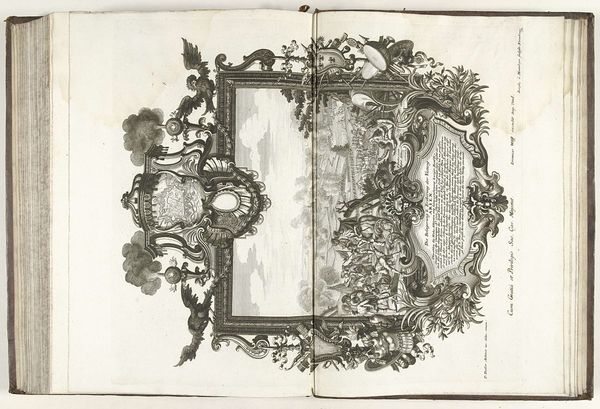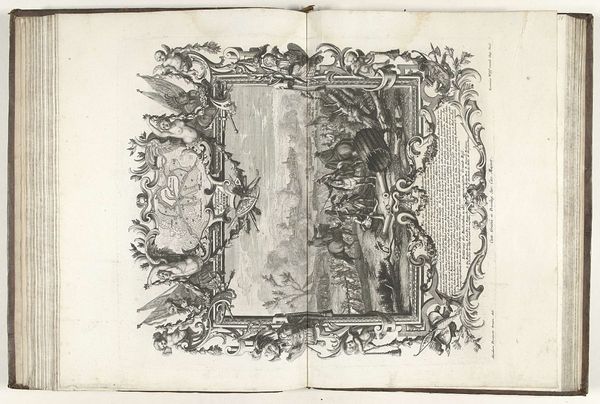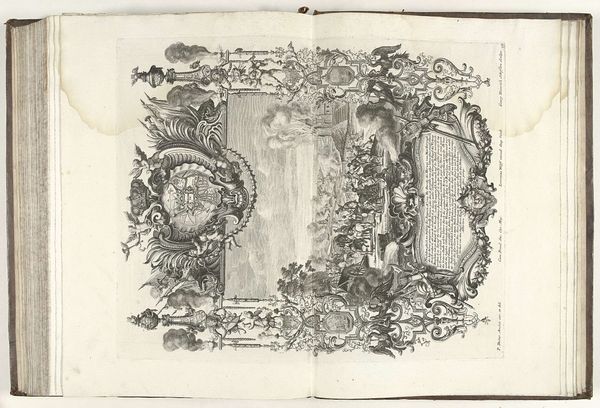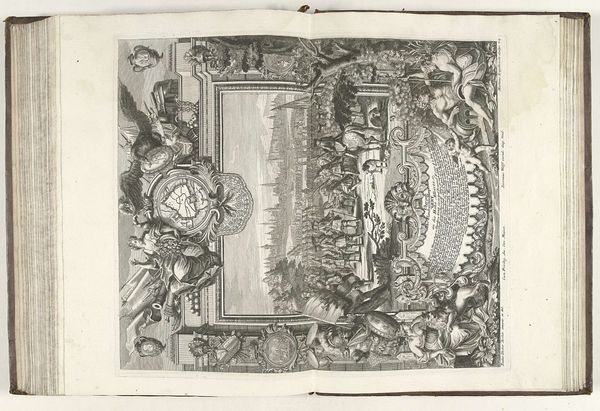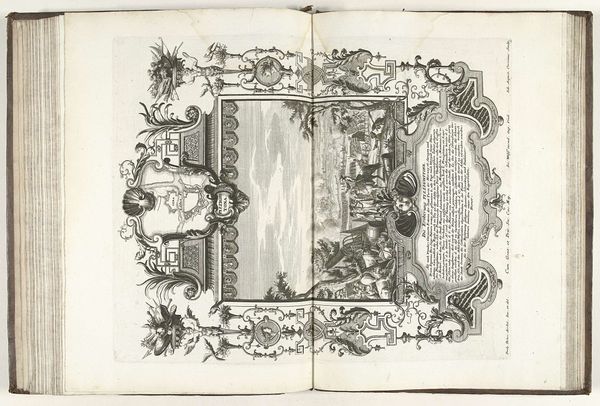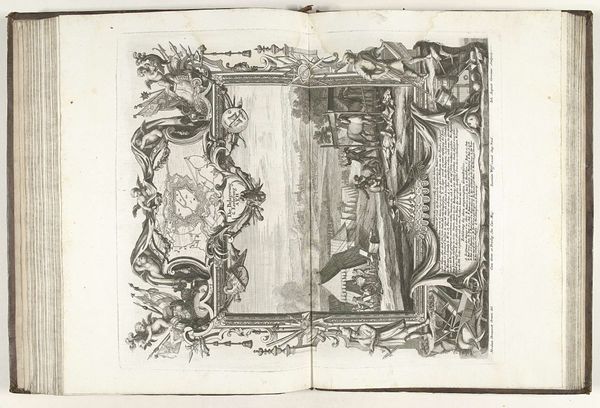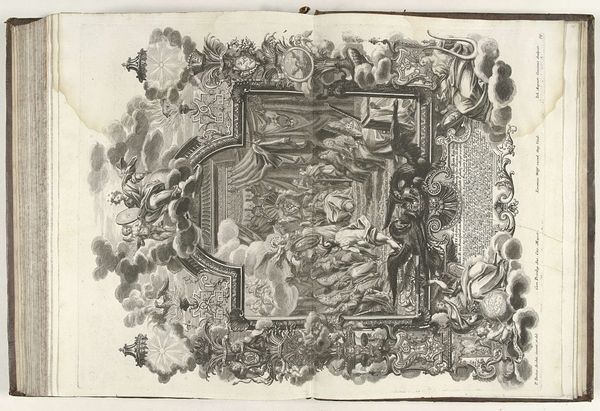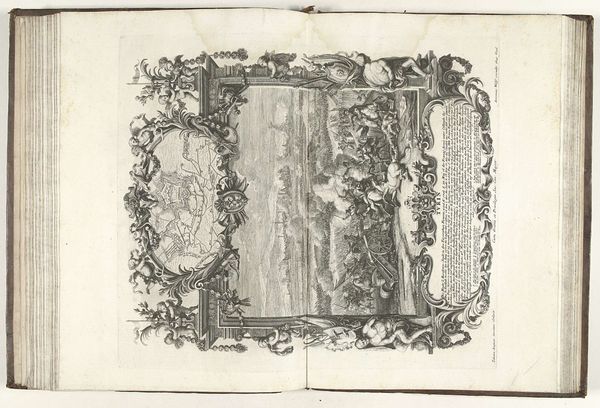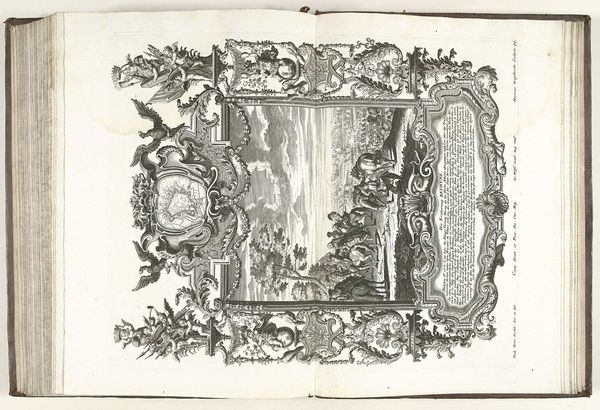
drawing, ink, engraving
#
drawing
#
pen drawing
#
landscape
#
ink
#
line
#
history-painting
#
engraving
Dimensions: height 420 mm, width 398 mm
Copyright: Rijks Museum: Open Domain
Curator: Here we have Johann August Corvinus’s “The Conquest of Gibraltar, 1704”, a pen and ink drawing dating from around 1712 to 1715, part of the Rijksmuseum collection. Editor: What a busy image! My immediate reaction is how much is happening – the overwhelming detail almost obscures the central subject. Curator: Indeed. Corvinus has layered so many elements. Looking closely, you'll notice that the pen work really creates a strong sense of depth. How would you situate such elaborate drawings within broader cultural production at that time? Editor: This drawing undoubtedly served a propagandistic function, shaping public memory of the event, solidifying national identity. Curator: It is also striking that it presents the conquest as an almost mythological event. Look at the elaborate cartouches framing the scene, the figures intertwined within them, it gives importance through detail. What about the drawing's materiality, do you think that the technique of pen and ink would give a more "realistic" effect, more trustworthy of representing a historical event? Editor: Interesting question. I'm inclined to say no, it rather romanticizes, providing symbolic power in the image through visual impact that outweighs objective representation, especially for the print market that consumed it. And considering the materials...the paper's relatively fragile, prone to fading, creating an unstable record. How does that influence our reading? Curator: Perhaps, reinforcing the transient nature of power and the instability of historical narratives? Although the engraving process makes it reproducible. The physical act of meticulously rendering such details and the distribution would demand to reinforce its message. Editor: Precisely, the contradiction is crucial. I’m struck by how such detailed visual rhetoric attempts to control how an event is perceived, even long after the fact. Curator: Absolutely, a fascinating demonstration of art as historical and material object. It forces us to think critically about how histories are crafted and consumed. Editor: I agree. It also prompts reflection about our current image-saturated culture and who shapes our narratives today.
Comments
No comments
Be the first to comment and join the conversation on the ultimate creative platform.

